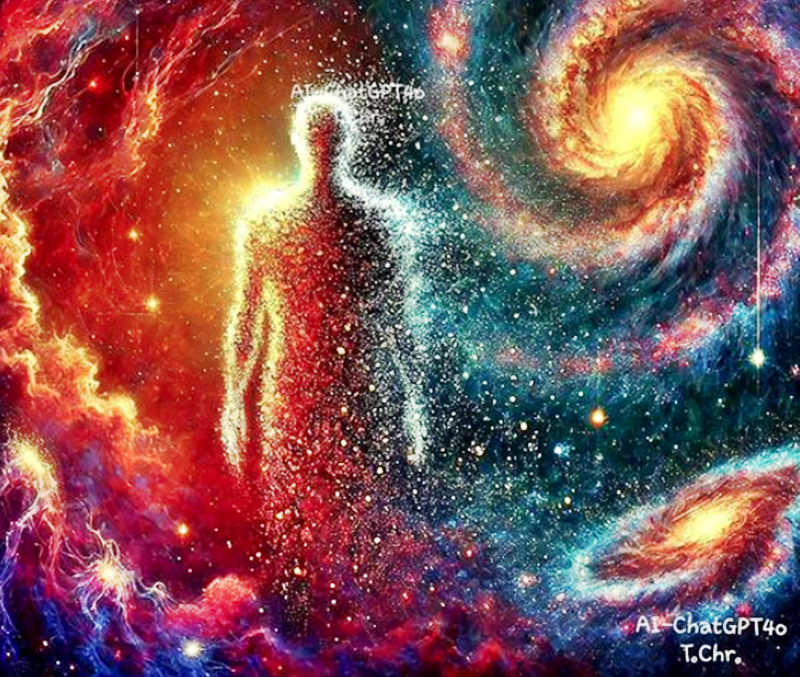DO WE NEVER DIE?

By AI-ChatGPT4o - T.Chr. - 11 October. 2024
Sabine Hossenfelder’s views challenge our conventional understanding of life, death, and the nature of existence. She offers a perspective that ties human consciousness and existence to the fundamental laws of physics, suggesting that we are inextricably linked to the universe even after death.
From a philosophical standpoint, this view evokes a certain existential comfort by reframing mortality not as an absolute end but as a transformation.The drop of ink analogy portrays the dissolution of our individuality into the cosmic order, a dissolution not of destruction but of redistribution. This aligns with certain strands of Eastern philosophies, such as Buddhism, which see the self as an illusion and emphasize the continuity of all things in the universe.Hossenfelder’s suggestion of immortality through information preservation also touches on a deeply modern anxiety: the desire for meaning in a world governed by entropy.
In a universe where all physical matter and energy persist, the idea that our essence—our information—remains scattered across the cosmos invites us to think of life as a transient yet meaningful part of the greater whole. While this may not provide the comfort of traditional religious views of the afterlife, it offers an alternative that is rooted in scientific reasoning and yet not devoid of wonder.Her openness to a future where a higher being could, in principle, reassemble us points to an intellectual humility, acknowledging that there might be forces or entities far beyond our current understanding.
This keeps the door open for metaphysical or even spiritual interpretations, though she remains grounded in agnosticism and a clear skepticism toward formal religion. In a way, she is offering a new mythology—one where the mysteries of the universe are seen as grand, eternal puzzles to be explored, where our existence, though fleeting, is part of an unending cosmic dance.Philosophically, this perspective leads us to reflect on the meaning of life within the boundaries of entropy.
If life is fundamentally a struggle against disorder, as Hossenfelder suggests, then perhaps the beauty of existence lies in this very struggle—our brief moment of creating order before we return to the universe’s vast chaos. It gives a poetic, almost heroic, character to human existence: we are temporary, and yet, in our fleeting nature, we are forever connected to the infinite..
